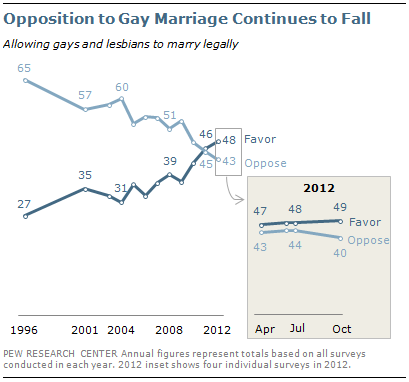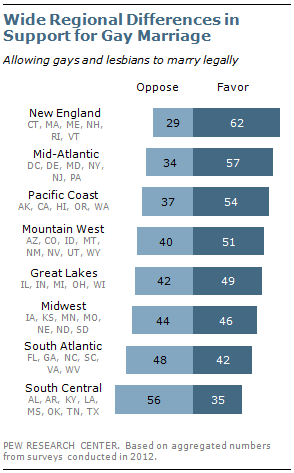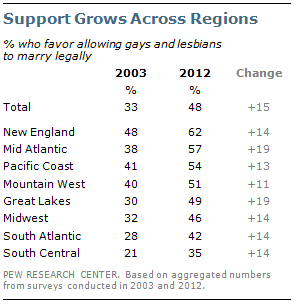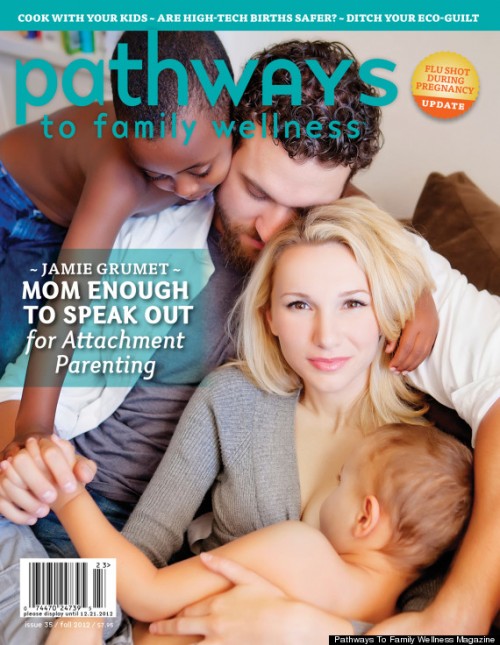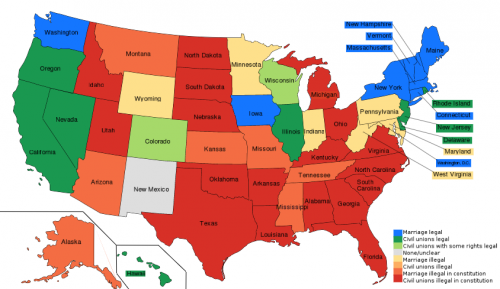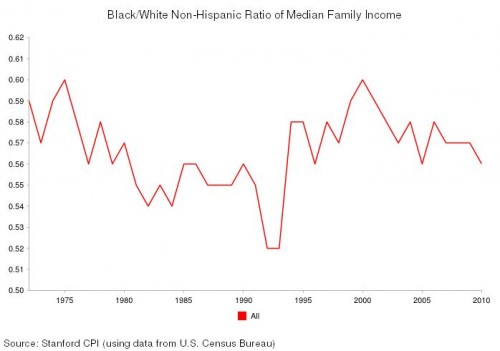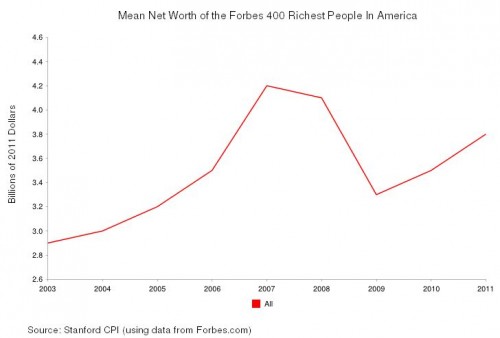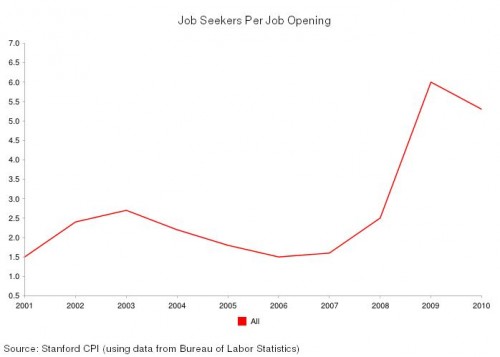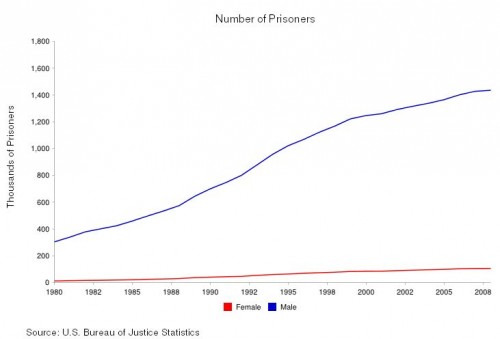Over the past couple of years, the U.S. appears to have finally reached a tipping point regarding attitudes toward same-sex marriage. In polls from a variety of organizations over the last two years, more people supported same-sex marriage than opposed it, and in some polls an outright majority expressed support for marriage equality.
Data from the Pew Research Center poll provide more evidence for this fairly rapid shift in public attitudes:
However, those attitudes vary widely by region. Looking more closely at the Pew data, we see that support is highest in New England, where over 60% of those surveyed in 2012 favored making same-sex marriages legal, but most regions of the U.S. now show more support than opposition. In fact, only in the South Atlantic and South Central states did more respondents oppose marriage equality than support it. The South Central region was least supportive, with 56% of respondents opposing same-sex marriage:
Support for same-sex marriage has grown in ever region over the past 10 years. A decade ago, supporting same-sex marriage was clearly a minority opinion across the U.S.:
As the Pew Center post points out, it’s not that attitudes in the South aren’t changing, but they’re only now approaching where the rest of the country was on the issue a decade ago.
Gwen Sharp is an associate professor of sociology at Nevada State College. You can follow her on Twitter at @gwensharpnv.

